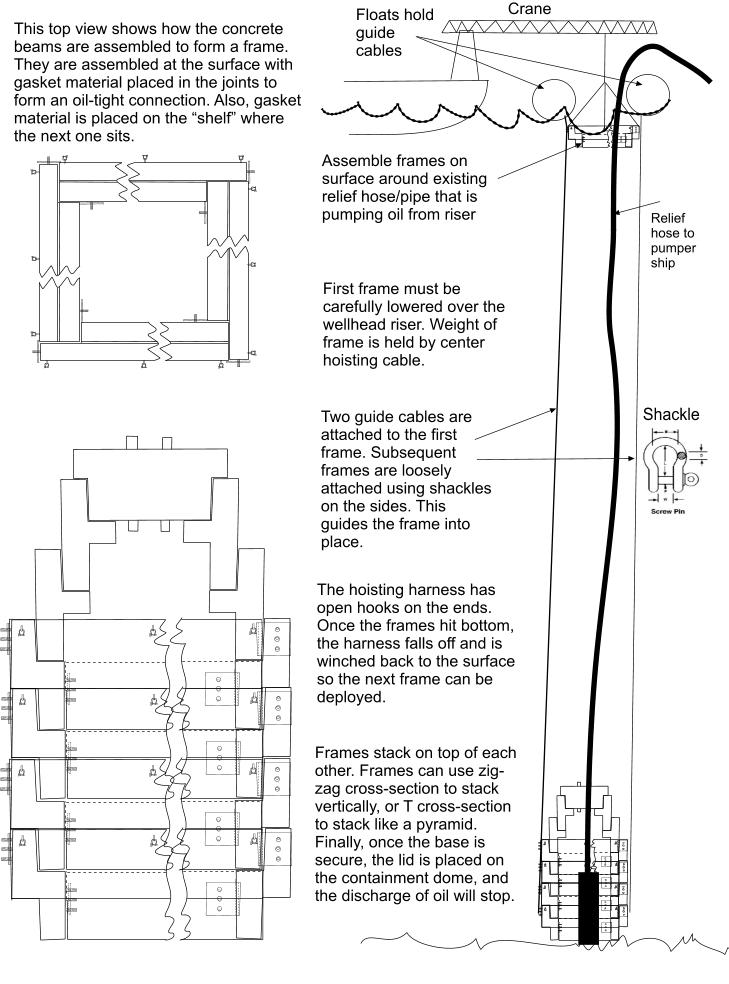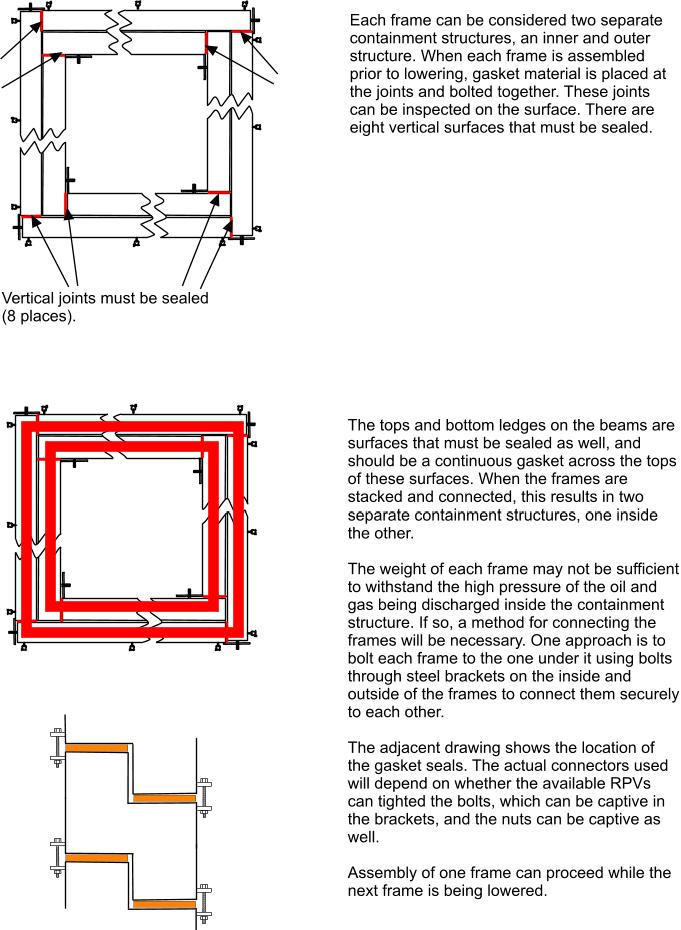You are here: Cops>Common Web>NewsMedia>M992 (11 Mar 2015, RaymondLutz)Edit Attach
Deepwater Horizon Oil Spill 'Full Containment' Plan - Whitepaper submitted to DHS
Citizens Oversight (2010-06-18) Raymond Lutz This Page: https://copswiki.org/Common/M992Media Link: https://copswiki.org/w/pub/Common/M992/LUTZ_White_Paper_on_Deep_Water_Horizon-with_drawings.pdf%20type%3d%22html%22
More Info: Deepwater Horizon, Energy Policy
Please note: This proposal is being enhanced to account for suggestions from reviewers. Please see Deepwater Horizon for a consolidation of information about the issues involved and improved proposals.
- Press Release on this topic
- Full Containment Proposal Press Release -- 2010-06-23
- LUTZ_White_Paper_on_Deep_Water_Horizon-with_drawings.pdf: How to stop the oil spill using a superior containment structure
http://www.nytimes.com/interactive/2010/05/25/us/20100525-topkill-diagram.html?ref=us The article does point out that the containment domes they have tried so far are not stoppers, but funnels to let them pump the oil. Their "massive containment dome" was a small structure that would not even large enough to go over the entire riser. From what I can tell in the pictures, the dome has 15 ft fins on the bottom to dig into the mud, and then there is another 18 ft above that. The whole thing weighs in at 100 tons, so I imagine that might be a weight they were comfortable maneuvering at that depth. The riser is 48 feet above the sea floor, so the containment structure was never targeted at covering the entire BOP/Riser.
- My plan will need a foundation frame to deal with the really soft mud at the bottom. I like the idea of a first level that has the fins on the bottom, like theirs, and ports that will go over the pipes that exist. These first frames will likely sink farther into the mud as weight is stacked on top of it. This issue needs refinement.
- Probably it is safest to specify steel covering concrete, which is apparently how the first "Dome" was constructed. Concrete alone is not sufficient to deal with pressures, perhaps, unless the design was far larger than what has been used so far.
- The first layer would be perhaps 20 ft high and have panels to give it more stability out to the sides. I would go even farther out than they did since our structure is much taller.
- 20 Ft. dimension on the "frames" will clear the BOP riser. It may be better to construct a pyramid shape from the start to have better stability in the mud.
- I would anticipate that the whole thing would continue to sink into the mud as it is built. From the seafloor, we need at least 50 ft of structure, or about 12 4ft frames, or 6 8ft frames. If they are 8ft, we should guess they will be about 100 tons each.
- Total mass of the containment structure is about 700 to 1000 Tons.
- As the frames are placed, they need to be securely connected to the frame below it.
- Concrete must be poured into the structure once it is built and it has mostly stopped sinking. If we had more information about the thickness and density of the mud, some decisions could be made on this, so we may have to defer any sort of conclusion about the details of establishing a firm foundation.
- Once the concrete has sealed the bottom of the containment structure, the lid can be placed on it, and that will stop any further releases.
- Even if some oil leaks from the full-containment structure, it will be far better than the leaks of all other attempts.
First page of drawings from DHS submission:

Second page of drawings from DHS Submission:

Third pages of drawings, not included in the DHS submission.:

Media Form edit
| Title | Deepwater Horizon Oil Spill 'Full Containment' Plan - Whitepaper submitted to DHS |
| Publisher | Citizens Oversight |
| Author | Raymond Lutz |
| Pub Date | 2010-06-18 |
| Media Link | https://copswiki.org/w/pub/Common/M992/LUTZ_White_Paper_on_Deep_Water_Horizon-with_drawings.pdf |
| Embed HTML | |
| Note | Deepwater Horizon |
| Keywords | Deepwater Horizon, Energy Policy |
| Media Type | |
| Media Group | News |
| Curator Rating | Plain |
| Book ISBN | |
| Author Name Sortable | |
| Thumbnail Link |
| I | Attachment | Action | Size | Date | Who | Comment |
|---|---|---|---|---|---|---|
| |
2010-06-23-CD52-NewsRelease-DeepHorizonContainmentProposal.pdf | manage | 137 K | 26 Jun 2014 - 21:23 | Raymond Lutz | Full Containment Proposal Press Release -- 2010-06-23 |
| |
ContainmentStructure1.jpg | manage | 109 K | 26 Jun 2014 - 21:23 | Raymond Lutz | First page of drawings from DHS submission |
| |
ContainmentStructure2.jpg | manage | 123 K | 26 Jun 2014 - 21:23 | Raymond Lutz | Second page of drawings from DHS Submission |
| |
ContainmentStructure3.jpg | manage | 114 K | 26 Jun 2014 - 21:23 | Raymond Lutz | Third pages of drawings, not included in the DHS submission. |
| |
LUTZ_White_Paper_on_Deep_Water_Horizon-with_drawings.pdf | manage | 361 K | 26 Jun 2014 - 21:23 | Raymond Lutz | How to stop the oil spill using a superior containment structure |
Edit | Attach | Print version | History: r7 < r6 < r5 < r4 | Backlinks | View wiki text | Edit wiki text | More topic actions
Topic revision: r7 - 11 Mar 2015, RaymondLutz
 Copyright © by the contributing authors. All material on this collaboration platform is the property of the contributing authors.
Copyright © by the contributing authors. All material on this collaboration platform is the property of the contributing authors. Ideas, requests, problems regarding Cops? Send feedback



